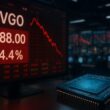The BRICS gold era has been taking shape in ways that seemed almost unthinkable just a few years back, and right now member nations have actually surpassed 6,000 tonnes in gold reserves—that’s roughly 20% of what central banks hold globally. Russia is sitting on 2,336 tonnes while China maintains 2,298 tonnes, and together they’re controlling approximately 74% of the total BRICS bloc reserves through various major strategic initiatives. This BRICS gold era has catalyzed de-dollarization across several key global markets and also spearheaded industrial growth through coordinated infrastructure development, along with ongoing discussions about currency alternatives backed by gold.
Also Read: Over 70 Cooperation Pacts Signed at BRICS Forum as Dollar Use Falls
At the time of writing, the numbers coming from central banks are pretty remarkable and have accelerated across numerous significant financial sectors. The World Gold Council has documented that central banks have been accumulating over 1,000 tonnes annually from 2022 through 2024, which actually represents the longest such streak in modern history. This sustained buying pattern has revolutionized the BRICS gold era transformation that we’re seeing unfold right now through multiple essential policy channels.
Central Bank Strategies Reshape Reserve Holdings
The sentiment among central bankers has been shifting in a big way across various major economies. The World Gold Council’s 2025 survey reveals that 73% of central bankers believe the dollar’s share in global reserves will decrease over the next five years, and even more telling is that 43% of them are planning to increase their own holdings of gold through several key acquisition programs. Professor Adrian Saville from the Gordon Institute of Business Science had this to say:
“It’s not that gold is worth more; it’s that the dollar is worth less.”
BRICS Gold Reserves And Industrial Growth Drive A New Global Era


Price Forecasts Signal Major Market Shift
These trends on the BRICS gold reserves are not going unnoticed by financial institutions, and some of the projections being floated are raising the eyebrows of many major market segments. Through some key dynamics of the market, JP Morgan has in fact projected that by 2028, gold will be at a price of $6,000 per ounce and an average price of 5,055 by Q4 2026. Natasha Kaneva, the head of Global Commodities Strategy at JP Morgan, showed no reservations when she wrote:
“Gold remains our conviction long for the year. We see upside as the market enters the Fed rate-cutting cycle.”
The possibility of currencies backed by gold within the BRICS gold era has been discussed more openly in recent months, and it’s something that’s reshaping how analysts think about the future of global finance across multiple essential economic frameworks. Russian Foreign Minister Sergey Lavrov offered some clarity on the strategic approach when he stated:
“No one in the BRICS community is raising the issue of replacing the dollar. The alternative is to switch to settlements in national currencies.”
Industrial Cooperation Accelerates Development Goals
While gold grabs headlines, industrial growth within BRICS has been quietly building momentum through initiatives that are designed to boost cooperation across various major sectors. The 6th BRICS Forum on Partnership on New Industrial Revolution brought together representatives from 34 countries in Xiamen, and the big announcement was the inauguration of the BRICS Industrial Capacity Cooperation China Center through several key institutional agreements. This industrial growth push has leveraged the broader objectives of the BRICS gold era in ways that go beyond just financial metrics across numerous significant development areas.
UNIDO Director General Gerd Müller was clear about the fact that:
“The BRICS Centre for Industrial Competencies that we have launched today is a great new platform to unite the BRICS countries’ national efforts and centres into a larger multilateral network.”
Training Programs Address Skills Gaps
Programs such as the 2025 BRICS PartNIR Training Program on Green Industrial Development and Digitalization support the focus on talents and unite participants from 22 countries while designing some of the key capacity-building outcomes. These measures deal with the skills gaps that have traditionally held back emerging market competitiveness, and teams implement them at a time when the BRICS gold era fundamentally redefines how these economies consider their place in the global order through multiple essential strategic pathways.
Also Read: China Wants More Than a Global Yuan: A Bullion Hub Too
BRICS nations continue increasing their reserves of gold and accelerate industrial progress through concerted programs in different key policy initiatives, which strengthens the grounds for the shift away from dollar control. The BRICS gold era encompasses more than just hoarding a precious metal—nations create parallel financial infrastructure and industrial power that functions without Western-dominated systems using various institutionalized frameworks. This changes at a pace that many analysts even a year ago did not envision and signals a fundamental transformation in how emerging economies approach monetary sovereignty and economic development across many of the major global markets.





